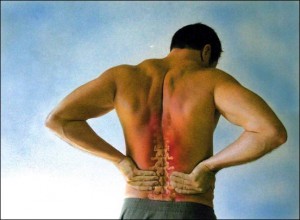According to an array of medical sources, 8 out 10 people currently suffer or will suffer from back pain at some point in their lives. Women in particular are prone to spinal injuries due to pregnancies, lugging around weighty purses, and wearing high heals.
Whether you’re fighting an ongoing back problem or want to become proactive so you don’t fall victim to it in the future, here are some ways to treat this physical condition safely.
Vitamin K
Most folks know that a good dose of calcium and vitamin C helps to build and maintain strong bones. However, Japanese researchers have recently identified vitamin K — found in broccoli, spinach, and dark leafy greens — help to make calcium deposits in bones much denser. As the old saying goes, “all bones are connected,” so the stronger the bones, the stronger the whole body, including your back.
Sleeping properly
The old belief that a firm bed is good for your back may not be so wise. Though it may sound counterintuitive, a recent study found that people who slept on softer beds reported less lower back pain than those who slept on hard ones.
What about pillows? Same thing; plus, your pillows shouldn’t raise your head out of alignment with your spine. The way to determine this: If you’re a back sleeper, your chin shouldn’t press into your chest. If you’re a side sleeper, it shouldn’t curve up toward your shoulder.
Good posture
Remember when you were a kid and your mother or grade school teacher was adamant about the fact that you “should never slouch?” As an adult you have the additional challenge of a job that keeps you seated for much of the day.
Sitting at a desk for eight (or more) hours can really do a number on your back. To counter this, it’s extremely important to sit with your back against your chair (get a lumbar pillow if your chair is lacking in this regard), and always keep both feet flat on the floor.
Maybe not a six-pack
While many will work out diligently at the gym to secure that well defined six-pack set of abdominal muscles, it’s not necessary to go to those lengths if attending to your back pain is more of your goal.
However, having strong core muscles in your stomach can help protect your back from injury. Do this core-strengthening pelvic tilt two to three times a week. Lie on your back with knees bent, feet flat on the floor, and lower back flattened. Pull in your belly button toward your spine, contracting your abs. Your pelvis should lift slightly off the floor.
Lighten your load
Overstuffed backpacks, briefcases, and purses can be your back’s worst enemy. Many have said if the things you carry for long distances tip the scales at more than 10% of your weight, they are just too heavy.
Also, you need to learn how to carry them correctly. The best option is a long strap that lets you position these items across your chest like a messenger bag.
Stand tall
“Imagine a line coming down through your body from the ceiling,” says physical therapist Renee Garrison. “Your ears, shoulders, hips, and knees should all stack up along that line, with your head stacked directly atop your neck, not jutting forward.”
Standing tall enables you to align the body, reinforce your posture, and put you in a much more proactive position in preventing future back pain.
Pacific Spine & Joint
The Pacific Spine & Joint Medical Group is one of the few pain management clinics that treats and rehabilitates pain and injuries to the back and other parts of the body, without resorting to drugs and surgery.
They promote healing the body from the inside out, ending inflammation to achieve maximum pain relief and health benefits. Regarding spinal conditions, they can eliminate pain without resorting to drastic options.
The back is a vital part of the body’s structure. It combines bones, muscles, nerves, ligaments, tendons, and many other kinds of tissue in one complete system. Without your spine and the bones that support it, you wouldn’t be able to sit, stand, walk, or even give that loved one a healthy hug.
The folks at Pacific Spine & Joint believe that: “Many people fail to consider the health of their spine until back pain becomes a daily companion.”
Originally posted on November 20, 2013 @ 7:07 pm
